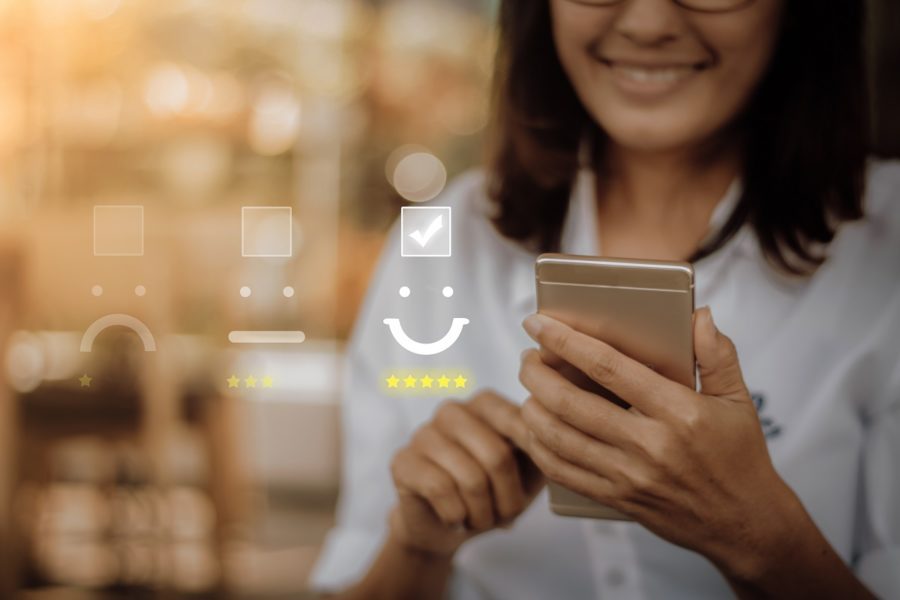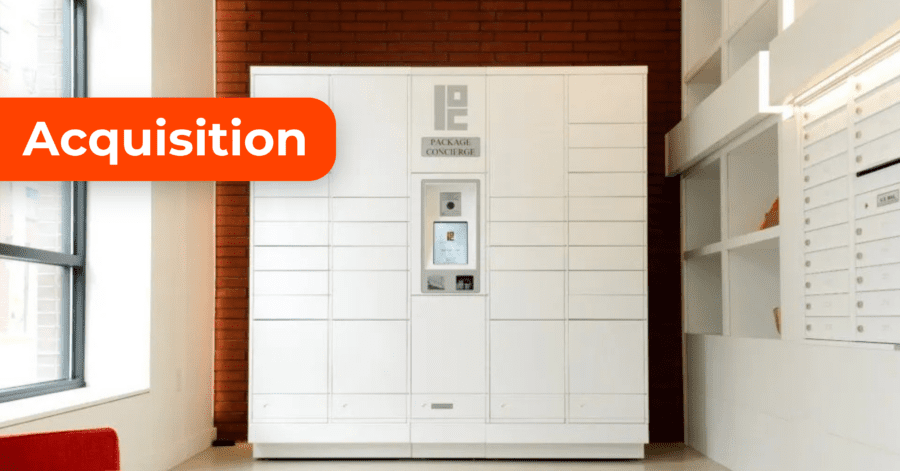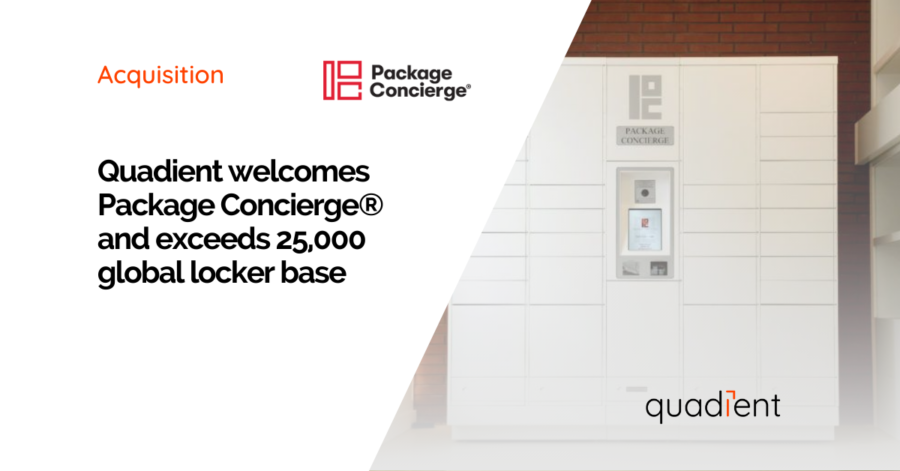
Retail
How to Improve the ROI of Your Customer Experience
Written by: Parcel Pending
5 Min Read
Published: October 22, 2021
Updated: March 28, 2023
Customer experience is the new battleground for winning customer loyalty, generating additional revenue, retaining talent, and ensuring market share growth. In fact, it is unquestionable that there’s a positive return on customer experience investment.
If you improve your business’s customer experience, you can expect to as much as double your revenue within 36 months1. And you can expect as much as an 80% increase in revenue for businesses that focus on improving customer experience.
To achieve this, organizations must put actionable programs in place to improve their customer experience ROI (return on investment). Read on for our tips and tricks for how to improve the ROI of your customer experience:
Customer Experience Defined
Put succinctly, customer experience is the overall perception your customers have about your brand based upon many interactions. It includes both intended messages (carefully crafted emails, for example), and unintended messages (keeping callers on a long hold, for instance).
In today’s “customer first” world, omnichannel marketing is a key influencer in a good customer experience; shoppers want to purchase effortlessly and seamlessly across every platform; they want to choose where they shop, how they shop, and how they want it delivered. And, most importantly, they expect excellence at all touchpoints.
The Relationship Between Customer Experience and Sales
The experience of the customer has a significant impact on a retailer’s bottom line. In the U.S., even when people love a company or product, 59% will walk away after several bad experiences and 17% will walk away after just one bad experience2. And 86% of customers say that they are ready to pay more if it means getting a better customer experience. In fact, they are willing to pay as much as 13% to 18% more for a product or service, provided they have a great customer experience.
There’s often a war of words on which is more important: creating a frictionless experience or a memorable one. Target is a good example of a frictionless experience with omnichannel shopping and shipping options whereas IKEA, the Nike store, and Disney World are good examples of an unforgettable experience. Startling new research published this year in the Harvard Business Review reveals that companies that focus on frictionless experiences vs. a memorable one had higher market share; brands that focus on creating memorable experiences have lower market share with little appreciable growth above a 15% market share cap3.
Interested in learning more about the importance of a seamless experience? Check out our related blog post.
Customer Experience Must be Instituted Company-Wide
For many companies, customer experience falls into the purview of the Chief Marketing Officer. In a new study on digital experience, 52% of respondents report that their CMOs drive the customer experience strategy4. However, a deeper dive into research shows that it needs to be a company-wide effort spearheaded by the CMO and/or the CIO (Chief Information Officer.) Companies invested in strong digital growth have created new positions, such as CIO of Marketing, which are dedicated to improving the customer experience by exceeding customer expectations.
Customer Experience Boosts Employee Retention
Often overlooked when it comes to customer experience is the role it plays in employee experience. There’s a direct correlation between customer retention and employee retention. Happy employees feel more engaged, stay longer, and over deliver on customer service. As the late Tony Hsieh, former CEO of Zappos once said, “Customer service shouldn’t just be a department, it should be the entire company.” Not surprisingly, companies with a highly engaged workforce report 20% higher sales5.
Personalization is Paramount in Driving Sales
Competing in the retail sector demands investing in digital tools to understand the customer journey; using that data for personalization is key. Recent research revealed that 56% of top professionals involved in customer experience strive to improve the personalization of customer communication6. And 43% of marketers report that they will invest in more personalization in 2021. The emphasis of the spending will be on hyper-targeted content and messaging.
How to Build & Maintain Trust with Customer Data
Using data for personalization comes with the caveat of protecting customers’ data. Here are three solid rules to follow to maintain trust:
- Comply with Privacy & Protection Laws – Recent data breaches and behavioral retargeting are frustrating customers. They want a say in opting in or out.
- Remain Transparent – Customers today demand to know how their data is being used, where it’s being used, and why it’s being used. Be sure to explain to customers how you are using their data.
- Connect the Data with the Benefit – If, for example, you have loyalty card programs, explain that yes, you track their purchases, but also offer special discounts based upon their past purchase behavior and/or offer up tailored selections based on their purchase history.
How BOPIL Boosts Customer Satisfaction
While BOPIS is now mainstream – with 90% of stores expected to offer the service in 2021 – it’s the savvy retailers who are embracing Buy Online, Pick-Up in Locker (BOPIL). BOPIL is one of several hot omnichannel trends because it offers an additional (and cheaper) delivery option for the customer.
Our clients indicate that the order pick-up experience with lockers significantly increases their customer satisfaction. Since it typically takes less than 30 seconds to retrieve a package via BOPIL, customers rate their shopping experience higher than other order pick-up methods (such as curbside or traditional BOPIS). Further, research shows that if the perceived wait time is less than two minutes, customers are four times more likely to purchase again. Plus, 85% of customers say they buy additional items in-store when picking up their order.
Net Promoter Score (NPS) Improvements
The Net Promoter Score is often considered one of the most important in evaluating the customer experience. It measures brand/company loyalty, customer satisfaction, and overall customer experience by asking one simple question: how likely are you to recommend our business to a friend, family member, or coworker?
Parcel Pending clients who install smart lockers have seen their Likely to Recommend (LTR) scores jump an average of 30 percentage points. Additionally, one client indicated that lockers are their highest-rated order pick-up method by a margin of nearly 10% (compared to curbside and standard BOPIS).
Customers have fallen in love with smart lockers because they can pick up their orders safely and securely on their schedule without having to wait for assistance from a store associate. One retailer using Parcel Pending lockers indicated that their customers are two times more likely to pick up an order from a store with lockers as opposed to a non-locker store.
Investing in improving your customer experience is a secret weapon for winning over customers and employees as well as increasing loyalty and sales. Smart lockers can demonstrate a significant positive return on your CX investment. To talk to a Parcel Pending by Quadient sales representative about how to improve customer experience while lowering costs, contact us here.
Sources:
- Bulao, Jacquelyn. TechJuy. 36 Astonishing Customer Experience Statistics for 2021. (2021, October 4). https://techjury.net/blog/customer-experience-statistics/#gref.
- Puthiyamadam, Tom & Reyes, José. PWC. Experience is everything. Get it right. (2017). https://www.pwc.com/future-of-cx.
- Williams, Luke, et. al. Harvard Business Review. What’s the Right Customer Experience for Your Brand?. (2021, July 30). https://hbr.org/2021/07/whats-the-right-customer-experience-for-your-brand.
- Acquia. (2020). Trend Report: Digital Experiences in Disruptive Times [Report]. Retrieved from: https://www.acquia.com/node/20096/asset
- RingCentral. 10 Stats that Show the Undeniable Connection Between EX and CX. (n.d.) https://www.ringcentral.com/better-employee-engagement/10-stats-that-show-the-undeniable-connection-between-ex-and-cx/.
- Pogrebniak, Anna. Lumoa. Personalized Customer Experience: What, How and Why. (2019, January 23). https://lumoa.me/blog/personalized-customer-experience.





